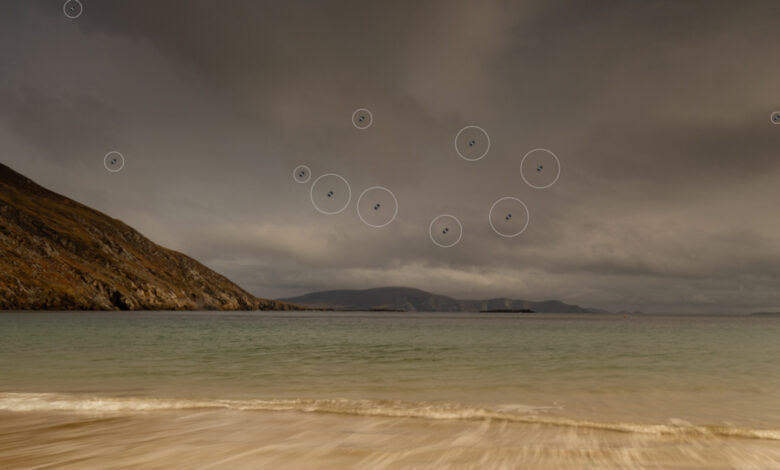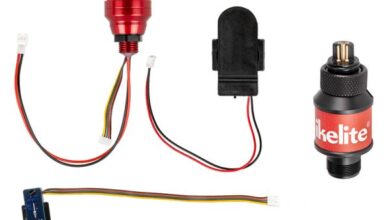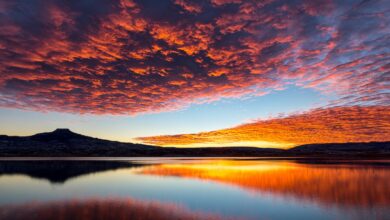How to Avoid Dust Spots in Your Images

Landscape photography offers endless opportunities to capture breathtaking scenes and create stunning images. However, one common issue that can plague your landscape photographs is the presence of dust spots. These pesky little specks can appear on your images and distract the viewer’s attention from the beauty of the scene. In this article, we will explore several effective techniques to help you avoid dust spots in your landscape images and maintain the integrity of your photographs.
1. Keep Your Gear Clean

Preventing dust spots starts with maintaining a clean camera and lens. Regularly clean your camera body and lens using appropriate cleaning tools. Start by using a blower to remove any loose dust or debris from the camera’s exterior and lens surfaces. Be careful not to blow air into the camera body, as it can potentially introduce dust particles into the sensor area.
Next, use a soft, lint-free microfiber cloth or lens cleaning tissue to gently wipe the lens elements. Apply lens cleaning solution sparingly, and avoid excessive pressure that could damage the lens coatings. It’s essential to establish a routine cleaning schedule to ensure that your gear is always in optimal condition.

2. Change Lenses in Dust-Free Environments
When changing lenses in the field, it’s crucial to do so in a dust-free environment. Find a sheltered area away from strong winds and blowing dust. Turn your back to the wind to minimize the chances of dust particles entering the camera body. Additionally, avoid changing lenses in sandy or dusty areas, as these environments are particularly prone to introducing dust into your gear.
If you must change lenses in less-than-ideal conditions, do it quickly but carefully. Hold the camera body with the lens mount facing downward to minimize the risk of dust falling onto the sensor. Be mindful of your surroundings and take necessary precautions to prevent any dust from settling on sensitive areas.

3. Use Lens Hoods and Filters
Lens hoods are not only useful for reducing lens flare and improving contrast but can also provide an added layer of protection against dust and debris. Attach a lens hood to your lens whenever possible, as it helps shield the front element from direct exposure to airborne particles.
Additionally, consider using protective filters such as UV filters or clear filters. These filters can serve as a barrier between the lens and external elements, including dust and dirt. However, be mindful of the quality of the filter you choose, as a cheap or low-quality filter can potentially degrade image quality.
4. Be Mindful of Changing Weather Conditions
Weather conditions can play a significant role in the presence of dust spots in your landscape images. During dry and windy conditions, there’s a higher chance of dust and particles being suspended in the air. Similarly, shooting in sandy or dusty environments, such as deserts or construction sites, can pose a greater risk.
Pay attention to weather forecasts and be mindful of the prevailing conditions when planning your landscape shoots. If you anticipate dusty or windy conditions, take extra precautions by sealing your camera bag or using protective coverings to minimize dust exposure.
5. Shoot at Wider Apertures
Dust spots become more apparent in photographs when using smaller apertures, such as f/16 or f/22, where the depth of field is greater. To minimize the visibility of dust spots, consider shooting at wider apertures (larger f-numbers) whenever possible.
By shooting at wider apertures, you’ll achieve a shallower depth of field, which naturally reduces the focus on particles that may be present on your sensor. Keep in mind that this technique works best when your scene allows for a narrower depth of field without sacrificing the desired sharpness throughout the image.

6. Regularly Inspect and Clean Your Camera Sensor
Despite taking preventive measures, dust particles may still find their way onto your camera sensor over time. Regularly inspecting and cleaning your camera sensor is crucial to maintaining spot-free images.
Most cameras have a built-in sensor cleaning function that uses ultrasonic vibrations to shake off dust particles. Enable this feature and let your camera take care of light dust accumulation. However, for more stubborn dust spots, manual cleaning may be necessary.
If you’re not confident in cleaning the sensor yourself, it’s best to have it professionally cleaned by a camera service center or an experienced technician. They have the necessary tools and expertise to clean the sensor safely and effectively, ensuring optimal image quality.

7. Post-Processing Dust Spot Removal
Inevitably, despite your best efforts, some dust spots may still appear in your images. Fortunately, post-processing software offers powerful tools for removing dust spots during the editing process. Adobe Photoshop, Lightroom, and other image editing software have tools specifically designed to detect and remove dust spots.
Use the healing brush tool, spot healing brush tool, or clone stamp tool to carefully remove any visible dust spots from your images. Take the time to zoom in and thoroughly inspect your images, paying attention to both light and dark areas where dust spots may be more noticeable.
Remember to use these tools sparingly and blend any corrections seamlessly into the surrounding areas, ensuring a natural-looking result.
In conclusion, dust spots can be a frustrating and unwelcome addition to your landscape images. However, by implementing these preventive measures, such as keeping your gear clean, changing lenses in dust-free environments, using lens hoods and filters, being mindful of weather conditions, shooting at wider apertures, regularly inspecting and cleaning your camera sensor, and utilizing post-processing techniques for dust spot removal, you can significantly reduce the chances of dust spots appearing in your photographs. By taking these steps, you’ll ensure that your landscape images showcase the beauty of the scene, free from distracting imperfections.




